
|   |

|   |
Dance performances at the Sankat Mochan Sangeet Samaroh - Manjari Sinha e-mail: manjari@sinha.com May 11, 2022 The 99th edition of the well-known 'Sankat Mochan Sangeet Samaroh' celebrating Hanuman Jayanthi at the Sankat Mochan Mandir (temple), Varanasi, was held this year with remarkable zest and enthusiasm after the two dreadful pandemic years of its online avataar. Started in the year 1923 with one musical concert as an offering to the vidyawaan (knowledgeable), guni (virtuous), ati chaatur (most wise) Ram bhakt Hanuman, this renowned music festival has gradually expanded to a six-day affair with the topmost musicians and dancers offering their 'haaziri' from all over India, including the Ghazal singer Ghulam Ali from Pakistan. Thousands of rasikas from across the country and abroad attend this unique festival with no bars on religion, caste, creed and nationality. 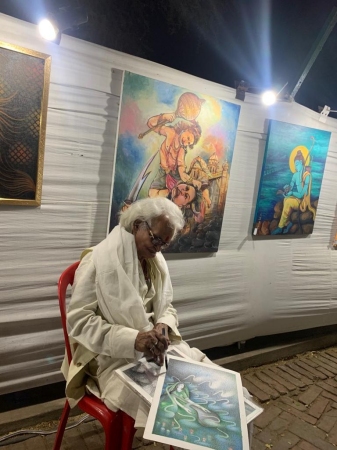
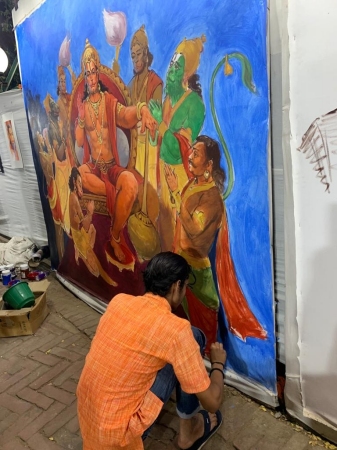
This was my first ever experience of attending this famous festival, and I was amazed to find the true musical discernment amongst the large crowds that thronged to attend the festival. There was no discrimination of social status amongst the music lovers who attended this overnight festival from dusk to dawn for six consecutive nights. The richest and the poorest enjoyed music while sitting next to each other in the most carefree manner. Apart from large audiences in front of the main stage facing the deity, there were many big screens showing the concerts in the other open spaces too, where people relaxed and comfortably enjoyed the music. There was also an art gallery adjacent to this area where artists could be seen painting, the aural bliss they were enjoying. Senior artists and professors who retired from the Visual Arts Departments of Kashi Vidyapeeth or Benaras Hindu University (BHU) curated the art exhibition and were also seen guiding the younger artists or busy with their own creative sketches. The current Mahant, Prof. Vishwambhar Nath Mishra, himself a noted pakhawaj player, and his devoted team of dedicated workers are looking forward to celebrating Sankat Mochan Shataabdi Sangeet Samaroh with a week-long festival on its centenary next year. Overcoming the technical glitches of the online festival during the Corona times, the festival this year was successfully streamed live from the venue while being presented live on the stage adjacent to the Sankat Mochan Mandir, marking its global presence with millions of viewers from across the world. Music is offered at Sankat Mochan in its entirety as defined by Sharngadeva in his seminal treatise Sangeet Ratnakar: "Geetam Vadyam tatha Nrityam / Trayam Sangeetam uchyate"! Classical Indian dance performances therefore are an integral part of the festival along with the vocal and instrumental concerts by renowned Hindustani and Carnatic musicians. Bharatanatyam and Odissi dance forms were also featured this year apart from all four Gharanas of Kathak, including Lucknow, Jaipur, Benaras and Raigarh styles. 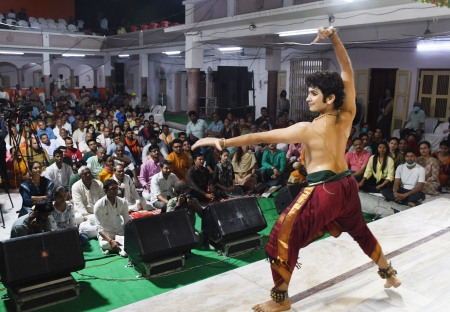 Pavitra Bhat Bharatanatyam by Pavitra Bhat totally captivated the devotees when he presented the entire Hanuman Chalisa written in Awadhi by the saint-poet Tulasidas as a full-fledged varnam. Set to a melodiously sung Ragamalika that concluded with Bharavi, the Hanuman Chalisa brought alive the whole story of Hanuman including how he brought the whole mountain along with the Sanjeevani herb for reviving Lakshmana and the Ashoka Vatika Prasang immaculately with picture perfect angashuddhi. The rhythmic flourishes during the intricately woven jathis interspersed with the sahitya, got him repeated applause in the typical style of this festival with the jaya ghosha of "Hara Hara Mahadeva". People would not let the brilliant dancer finish and go unless he presented the Surdas Bhajan "Hey Govinda Hey Gopala..." enthralling them with the imaginative sanchari of Gajendra Moksha. 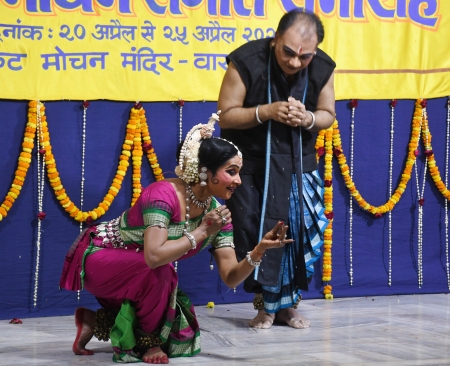 Sujata and Ratikant Mohapatra Ratikant Mohapatra presented Odissi in four segments opening with his own solo titled 'Shabari' depicting the story of the poor, old tribal woman devotee of Shri Ram, who hosted her Lord in her ordinary hut and offered him wild berries only after checking herself if they were tasty and sweet before offering them to Shri Rama. Music by Rupak Kumar Parida matched the intensity of his abhinaya. The second item was 'Ardhanarishwara' stotra of Adi Shankaracharya, danced as a duet by Aishwarya Singhdev and Preetisha Mohapatra. The third segment was a stirring solo by Sujata Mohapatra who touched the hearts of the audiences with her soulful abhinaya on Salbeg's poem. Odissi dance presentation by Srjan, Bhubaneswar, concluded with "Chudamani Pradan", the immortal choreography of Guru Kelucharan Mohapatra danced as a duet by Sujata and Ratikant Mohapatra, based on the Sundar Kand of Tulasidasa's 'Ram Charit Manas' that stole the hearts of the Ram bhakta rasikas of Benaras. 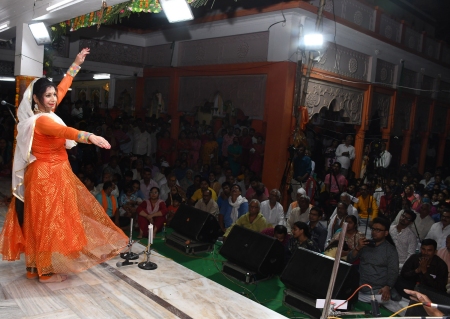 Anuradha Singh The lesser known Raigarh Gharana of Kathak made its impact with its unadulterated and powerful presentation by Anuradha V Singh from Bhopal. A direct disciple of Pt. Kartik Ram, Anuradha has done rigorous riyaaz under the watchful eyes of her guru for eight hours a day at a stretch and it shows in her crisp footwork and the perfect sense of rhythm. Opening with a Shiva Stuti in 5 beats cycle, she performed teentaal with aamad, tode-tukde, paran and chakkardar tihais climaxing with 35 pirouettes. The Lehra in Shivaranjani was enhanced with a distinct flavour when she replicated the fast taans on violin by crisp footwork taking care of even the off-beat flourishes. Her subtle abhinaya on Thumri "Mohe chhedo na" set to Addha Theka was equally impressive. Anuradha had a superb supporting team for accompaniment on tabla, violin and sitar, where Salim Allawale excelled as a versatile genius who did powerful padhant, played the electrifying tabla and harmonium and provided even the mesmerising vocal support. There was, in fact, a perfect tuning between the dancer and the accompanying artists that created real magic. 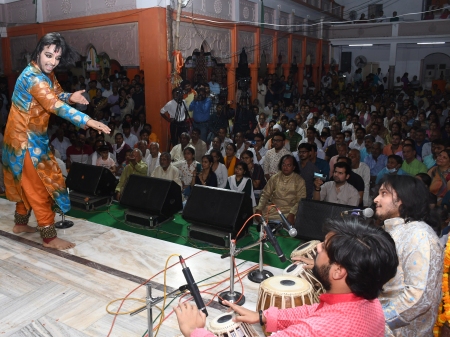 Rudra Shankar Mishra Rudra Shankar Mishra was there to represent the Banaras Gharana of Kathak. Opening with Ram Vandana, his own composition in raga Bhathiyar set to rupak taal, he switched over to teentaal for Upaj, and the rest of the intra-forms with the accompaniment of two tabla players taking their own lengthy turns and provoking him in turn, to translate the fury of his name into a dramatically 'raudra' and forceful manner. Rudra Shankar also danced on a challenging taal of 7 and ¾ beats cycle before dancing on the edges of a brass plate and concluding his performance with a Ram Bhajan. Anu Sinha from Delhi represented the Jaipur Gharana and Sulagna Bannerjee the Lucknow Gharana of Kathak on the second evening of the six-day festival. 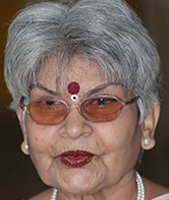 Manjari Sinha has an M.A. in Sanskrit and Music, and trained in vocal, tabla, sitar and Kathak dance. She has regular columns in national dailies as a music and dance critic. |